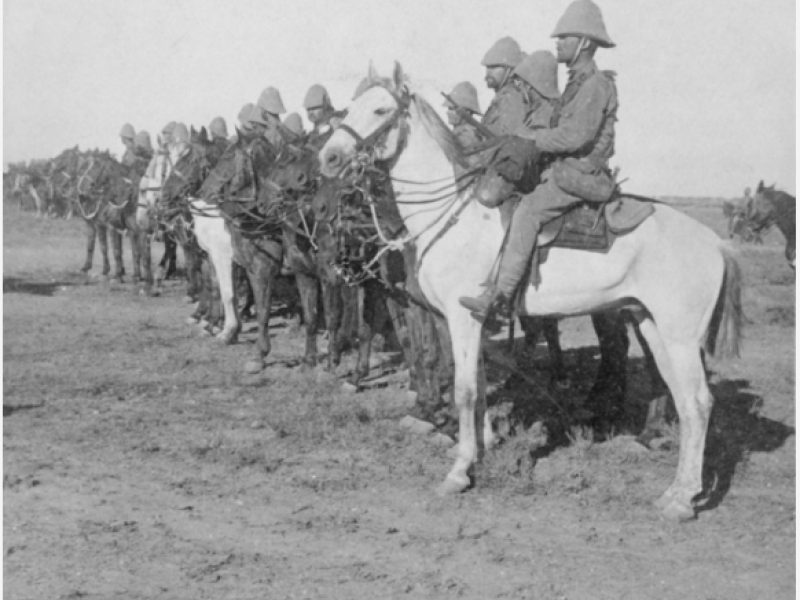Private Albert Edward Smith, 1st New South Wales Mounted Rifles
Albert Smith was born in Penrith, New South Wales, on Christmas Day 1877, the son of Thomas and Annie Smith. He was a keen horse rider and an excellent rifle shot.
Albert enlisted in the first contingent of colonial Australians sent to the war in South Africa. His unit, the 1st New South Wales Mounted Rifles, sailed from Sydney on 4 November 1899, arriving at Cape Town in early December.
In February 1900, the 1st New South Wales Mounted Rifles were involved in the last large-scale battle of the Boer War, the Battle of Paardeberg. The Imperial troops had surrounded the camp of the renowned Boer strategist, General Piet Cronje. On 27 February 1900, Cronje surrendered and more than 4,000 Boers were taken prisoner.
The capture of Cronje’s laager was a turning point in the war, and the Boer armies retaliated with guerrilla-style skirmishes against the British Imperial forces.
Albert’s unit was reinforced and in March 1900, joined Field Marshal Lord Roberts, the commander of British forces in South Africa.
Lord Roberts’ objective was to capture the capitals of the two Boer republics. The 1st New South Wales Mounted Rifles struggled through the cold, wet weather and skirmishes with Boers. It took a toll on the horses, too, with only 150 of 500 horses surviving to the end of March.
On 13 March, Lord Roberts’ forces captured Bloemfontein, the capital of the Orange Free State. The New South Wales Mounted Rifles did not participate in the occupation but were stationed at a camp about ten kilometres from the town.
Conditions in the camp were poor with outbreaks of dysentery and typhoid fever. It was also difficult to procure food for the men, other than meat from local farms. The men had not been equipped with tents so were constantly wet and suffering the effects of exposure.
In April, Australian war correspondent and poet Banjo Paterson wrote, “the men are dying like flies from [typhoid] fever … and fatigue parties can hardly dig the graves fast enough”.
Albert and his unit were involved in the action at Karee Siding on 29 March but mainly saw action in flying skirmishes against Boers rather than large-scale battle.
By this time, the Mounted Rifles were the northernmost of the Imperial troops, and their scouts were fired on almost every day by Boer patrols. Albert and his comrades spent their time building defensive trenches around their camps in case of sudden attack.
It was not all rain and drudgery. On 16 April, Easter Monday, Albert’s unit enjoyed an afternoon of sports. This involved horse races, blindfolded footraces, and a tug of war.
Yet the rain continued, and without shelter, men continued to sicken and die. Albert was one of those who became sick. He died at Bloemfontein on 31 May of typhoid fever. He was 22 years old.
Thomas Rogers, Historian, Military History Section
Image: Mounted troops of the NSW Mounted Rifles at Belmont, South Africa 31 Dec 1899

 Australian War Memorial
Australian War Memorial